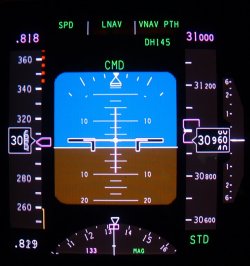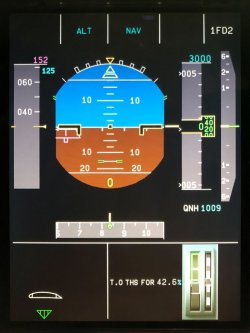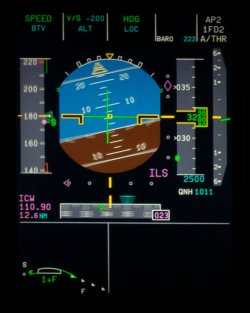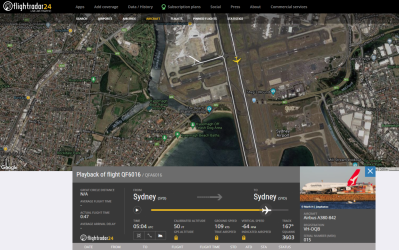jb747
Enthusiast
- Joined
- Mar 9, 2010
- Posts
- 13,511
Surface of the earth. So, the simple things it tells you are you instantaneous pitch and roll. Heading is displayed separately. Those three things tell you your attitude in the three axes.the attitude indicator is the instantaneous 3D position of the aircraft in space? - but relative to what?
Raw data encompasses a number of things, and can be used to describe some facets of navigation instruments, in particular ILS. In the case of flight directors, it means ignoring them (or at least not slavishly following) and looking at the actual attitude data which is displayed. As a generalisation, F/Ds are great where small changes, and finesse, are needed, but less so for large changes. They make manual ILS approaches easy and extremely accurate. When people refer to raw data for ILS approaches them mean looking at the actual ILS display and making changes based on it, rather than following the F/D.What are the raw data?
The various modes and settings that people put onto the MCP (mode control panel....across the top of the instrument panel), include things like speeds, heights, rate of climb or descent. That's also where the autopilot switches, and flight director switches reside. Nothing that is on the MCP has any direct effect upon the aircraft unless an autopilot is engaged. All of the settings apply simultaneously to the autopilots and flight directors. If both are turned off, the MCP does nothing. If an A/P is engaged, you can make the aircraft do things via the panel. The F/Ds, when turned on mimic what the A/P is doing.And the flight director indicates the attitude change to needs to occur to achieve its next intended position?
If the A/P is off, and F/Ds on, they suggest what you should do to make the aircraft do whatever is on the MCP. Note though, that they do not show absolute targets. If the F/D drifts to the right of centre it wants you to roll right, but it does not indicate that it wants any particular attitude. It will go back to the centre when it thinks you have enough roll. Better technique says that you roll to whatever you think is the correct attitude and then see what it does. F/Ds are basically stupid, and will move further and further from the centre if you don't immediately follow them... you're generally better off to look through them to the raw data, do what you want, and let it come back to you. Or, in a Boeing, just cycle it on/off, at which point it will always centre.
747-400 PFD. The F/D is the large white cross in the centre. It's really magenta, but overexposed. The entire cross does not move. The vertical and horizontal bars are separate elements.

A380, on the ground. F/D is turned off.

A380 in flight. The F/D is the green cross. A/P is also engaged, but the F/D is showing a command for slight left roll. So, it's basically been in a turn to the right, and now wants to go back towards wings level.

The important thing is that the flight director does absolutely nothing unless you manually follow it.















